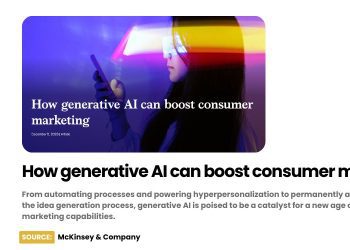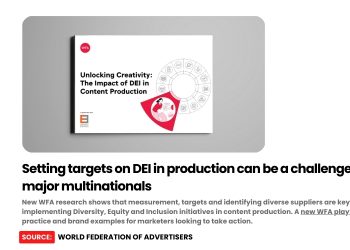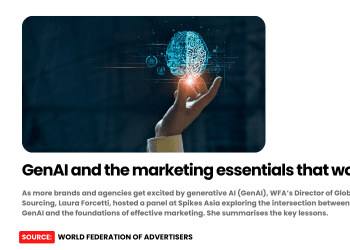Big global multinationals are turning to new marketing structures as part of their transformation, moving away from traditional functional and hierarchical approaches in favour of organising around the customer experience and the customer journey.
More than one in four (42%) now regularly work in cross-functional teams and 30% said they regularly work in self-organising agile teams often using stages and sprints to speed up delivery of projects. Fifty percent said they sometimes had agency staff embedded in their teams.
Despite these changes, many are still only taking the first steps in their digital transformation journeys with 43% still at the initial stages of deploying their strategy, according to new research from the World Federation of Advertisers (WFA).
Many others have even further to go with 10% having developed a strategy, which they have yet to start putting into action, 5% are still in initial planning and 14% having it on the agenda for 2019. By contrast, 19% said the process was highly advanced and 9.5% claimed the process was completed.
The research found that where digital often exists as a standalone function, delivering integrated campaigns is much harder. A key goal for transformation should be to move to a fully integrated structure as early as possible.
Designing for Integration: Global Marketing Communications Organisation Research was produced by the WFA and consultants OxfordSM and is based on responses from more than 20 multinational companies with a total global ad spend of $32 billion.
The study found that leadership is the most important driver of effective communication. With 76% citing leadership and direction as “most important” (Five on a scale of 1-5) in delivering success. Organisational design scored 53% on the same criteria, while individual team member skills ranked 47% and smart ways of working hit 41%.
Ten of the companies said they relied on a separate team for digital marcoms with just seven reporting that digital expertise was already woven into all teams. Ten respondents said they were working to have the latter in place.
“Digital roles within many organisations should have been made redundant by now and while they will remain a necessity for some, the goal for the majority should be moving to integration of these skills. The ongoing transformation of organisations and required skills-sets is, for good reason, a huge priority area for our industry’s marketing leaders,” said Stephan Loerke, CEO at the WFA.
Designing for Integration found that while the top overall goal for all organisations was to be able to deliver campaigns seamlessly across all channels, the reality was that fully integrated communication remains some way off, with key capabilities still below where they needed to be.
The biggest gaps in responding to companies’ armoury were in their ability to personalise communication and deliver “real-time” marketing. These showed a 1.7- and 1.5-point gap respectively, representing a 50% deficit when comparing current and desired performance levels.
The only area where priority and actual capability were the same was global campaign implementation.
“The MarComs environment continues to be fast-changing with new technology and partner solutions offering brand owners many different ways to deliver more effective communications. The best leaders support their teams both by having a clear vision and roadmap to a digitally enabled future, and by empowering those closest to the customer to do the right thing for them,” said Jonathan Turner, Chairman at OxfordSM.
Credit: WFA








